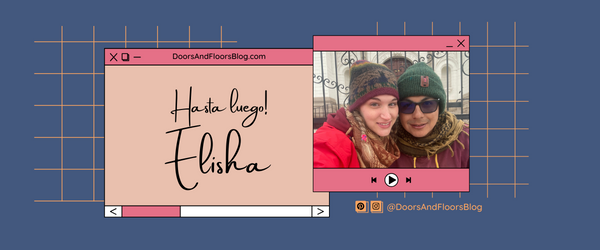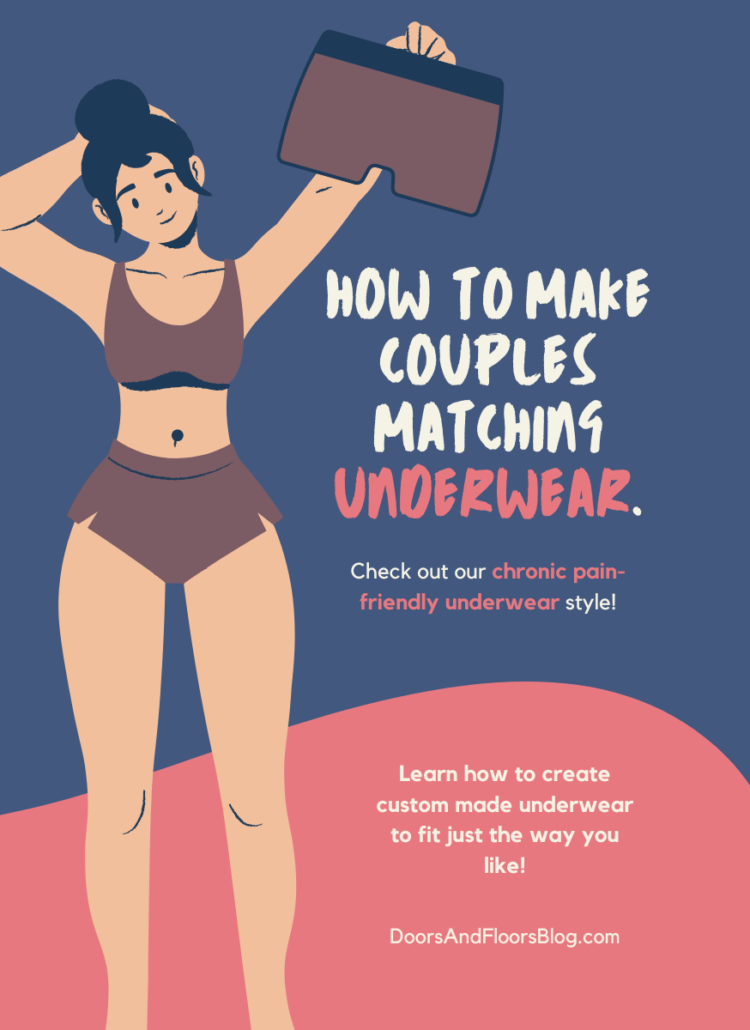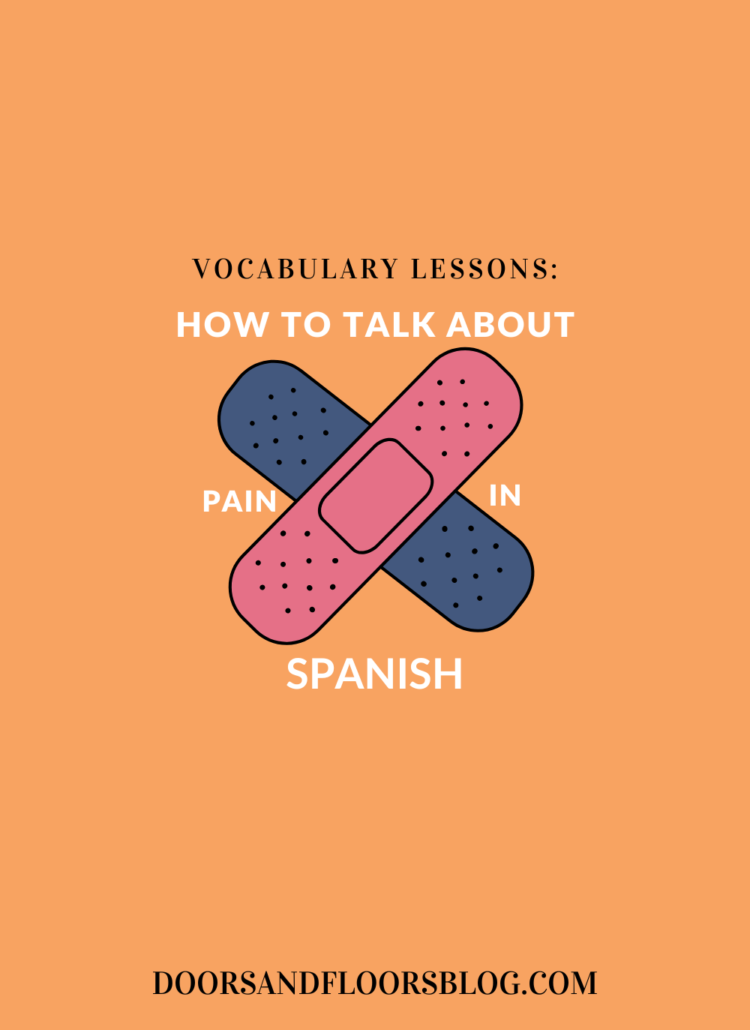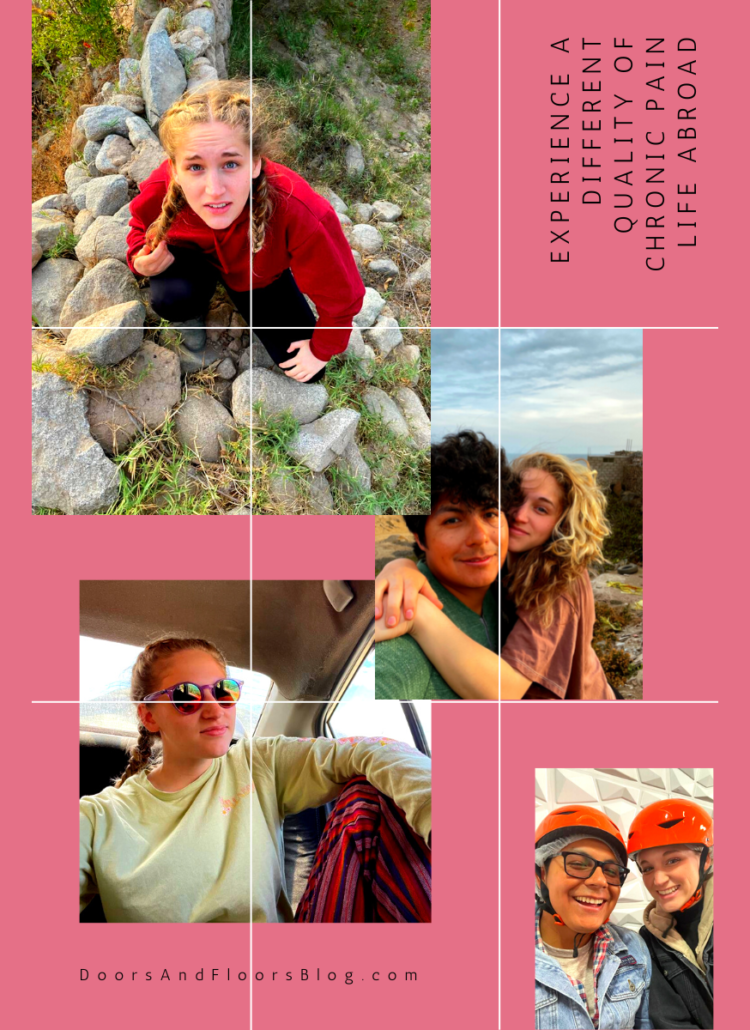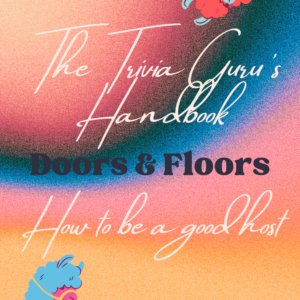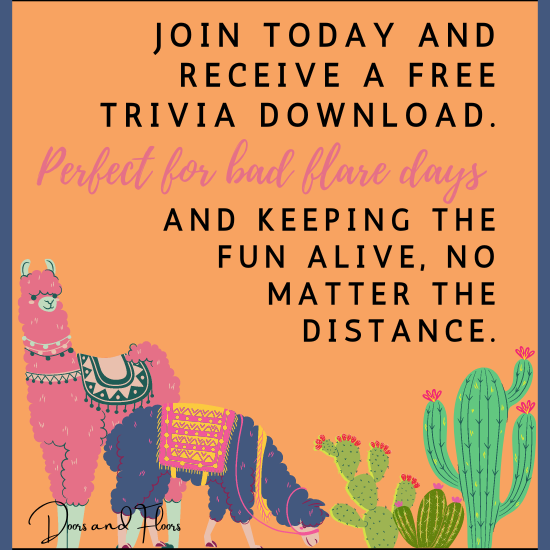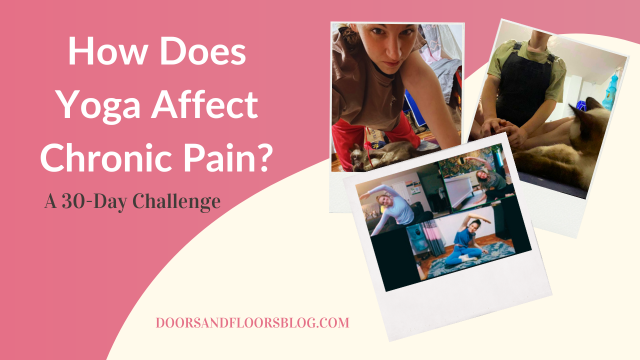
How does yoga affect chronic pain?
Personally, I’m not sure. So I challenged myself to do 20 minutes of yoga every day for one month. I wanted to see not only if yoga is good for chronic pain, but if it’s good for my chronic pain. I also wanted to know, could I physically handle working out every day? The goal was to monitor my body daily and take specific note of how I was feeling and how my body was handling it.
Did the yoga make it better? Worse? Did it do anything at all?
Disclaimer: The content on this blog is for informational and educational purposes only. It is not intended as a substitute for professional medical advice, diagnosis, or treatment.
Always seek the advice of your physician or other qualified healthcare provider with any questions you may have regarding a medical condition.
The information on this blog is based on personal experiences and should not be considered medical advice. The author does not claim to be a healthcare professional and does not provide medical advice, diagnosis, or treatment. The information on this blog is not intended to diagnose, treat, cure, or prevent any disease.
My Chronic Pain: Fibromyalgia

I’ve heard numerous things over the years about doing some sort of yoga, stretching or exercise for pain relief, but nothing is definite. I even had a doctor tell me once that, because of my hypermobility, I should never do stretching unsupervised, as I don’t know my limit and I could push myself too far.
In other words, I hadn’t yet tested this for myself.
I have a chronic pain condition called Fibromyalgia that I find limits my ability to keep up with regular exercise. I dream big, but sometimes the execution is too difficult for my body. Fibromyalgia causes widespread muscle pain. Perhaps that is part of the reason I struggle to keep up with regular exercise because exercising is something that uses a lot of muscle.
Here’s where this challenge is different, I’ve never done any sort of exercise every day for a month. I’ve done exercise three days a week before, but never every single day, no rest days.
I’ve done one-month challenges before, but those only ever required me to workout out a few times a week. There were always rest days. In the past when I’ve done these, I’ve struggled to complete the challenge and had to stop about two weeks in, give or take, due to pain and fatigue. Sometimes I went a little longer and sometimes a little less. I could do different things in different seasons.
Those challenges were more intense exercises though, perhaps Pilates, weight lifting, or some other video on YouTube to guide me. The result were always the same in that I could never keep it up long-term. I would eventually have to cave into the pain. And for however many weeks or months I managed to exercise for, I always needed an additional two months post-exercise to recover from it.
This time, with yoga for chronic pain, the challenge was different in that I refused to push myself beyond yoga. Stretching only, nothing more. Even if it was a good day and I felt like doing more. And even when it was a bad day and I felt like doing nothing, I pushed myself to work through it and complete my 20-minutes of yoga for that day.
Granted, if I wasn’t trying to observe, test and document how doing one month of yoga affected my chronic pain, I probably would have given in to the pain on a few days and rested.
Days One – Seven
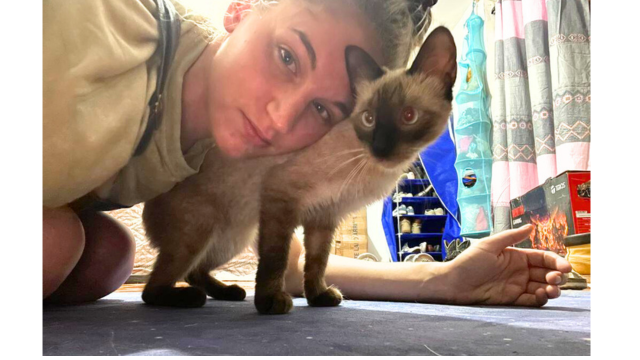
I started off my yoga for chronic pain poorly. The video I picked on day one had us on our hands practically the whole time. Maybe that isn’t a problem for you, but personally, I cannot handle all that weight on my hands. That day was already a bad hand pain day, so the added weight on it did not help.
Days two and three felt good. I switched gears and found a better video that focused on a different part of the body. I felt very on top of it and like I was doing a really good job and getting into a good flow.
Days four through seven I had really bad fatigue and a huge pain flare. I spent most of the day working in bed which gave me the idea to look for yoga in bed. I did yoga in bed a lot during the first two weeks, I tried to change it up every other day, but any time I had really bad pain I would go back to doing it in bed.
Days Eight – 13
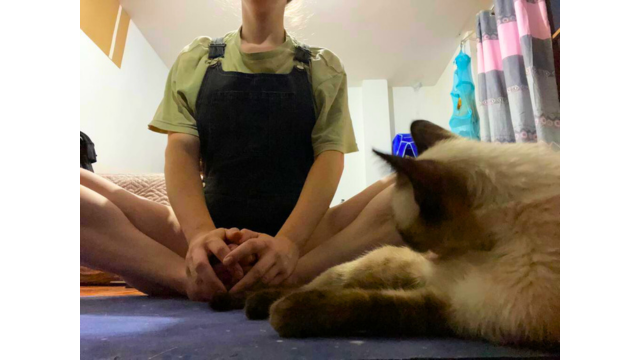
I found a bedtime video that I really liked, but she moved so fast through the moves that left me feeling winded and exhausted instead of relaxed. But I really liked the routine. The next day I did the same video, but I set a timer and paused the video at each step so I could take the moves at my own speed.
When I first started this challenge I was doing yoga in the morning, but I noticed I was having a very difficult time falling asleep at night. So I moved pretty much solely over to doing yoga at night starting the second week.
I found that bedtime yoga should be done either on the bed and/or make me sleepy. It should be slow. Lots of time to breathe and wind down.
Days 14 – 20
I had bad pain this whole week. I tried to do yoga in bed most nights because the floor hurt.
I’m looking over my notes now and I see that I complained about my bedtime yoga choices most of these nights. The videos weren’t right and they hurt, I did it too late, or any number of complaints.
One Saturday during this week I was so busy that I went to get ready for bed after midnight, and realized I still had to do my yoga for the day. I did it, but I did it in a bad mood because I was exhausted.
I like how slow and gentle bedtime yoga is on my body, but I find myself more frustrated when I do it because I opt to do it instead of keeping my bedtime.
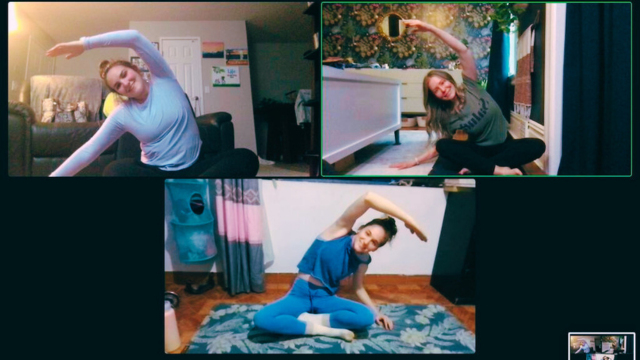
My family and I did yoga a couple of nights in the third and fourth weeks.
Days 21 – 30
On Saturday morning, day 25, I woke up super stressed out, so I did morning yoga to try to start my day in a better headspace. I will say three things about doing yoga in the morning.
- First: I feel really good when I get my yoga out of the way first thing in the morning
- Second: This took away my stress
- Third: This video was too intense for me
If you want a really good stretch, this video definitely offered that! It was too intense for me in that we spent a lot of the video on our hands. If you’re looking for just a yoga video in general, this one is great for you.
I was shaking the whole time but was determined to finish the whole thing, and I did!
Top Videos I Recommend
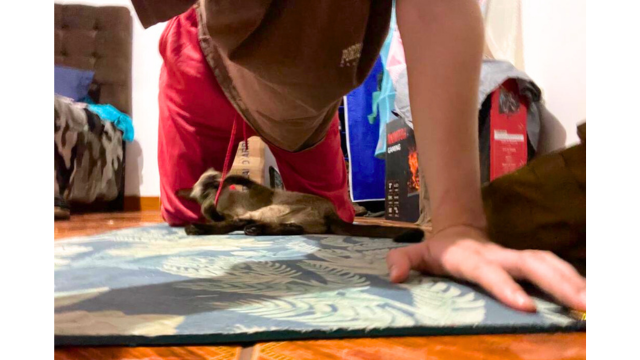
After doing one month of yoga for chronic pain, here are the top videos I recommend you try, based on the following criteria:
- Best Bedtime Yoga: Yoga With Bird
- Best Lazy Workout: Yoga With Adriene
- Best Yoga If You Want A Really Good Stretch: Jessica Richburg
- Best Full Body Yoga: Growingannanas
Yoga For Chronic Pain Long Term?
Is yoga good for chronic pain long term? I feel like I haven’t tested it long enough to have my own opinion on it yet.
I went into this challenge without a plan to continue beyond the first 30 days. It wasn’t a hard no, but the thought had never been explored. Somewhere around day 17, I saw a study that suggests doing yoga for 10 minutes a day for two months can provide health benefits. Ever since I’ve been debating whether I wanted to continue with yoga beyond this challenge.
On one hand, I think I should keep exercising, and overall I’ve handled it pretty well. I think that exercise is good for your body, and I would be proud of myself if I kept going.
On the other hand, doing yoga every day has kind of let me dismiss my bedtime and ditch my schedule. And that has really frustrated me. I feel like I’m trying to force it into the end of my day because I didn’t plan ahead and get it done earlier.
I know, that’s on me. I should be more disciplined about it. I’m trying to juggle too many things right now and that’s no excuse. You have time for what you make time for.
If I decide to continue with this, I think the only logical thing, is to force myself to schedule this in and not wait till the end of the night to do it. I need this to work for me, not against me. To help me better my health, not tear it down.
So maybe I will keep it up. I’ll keep you posted.
My Thoughts About Yoga For Chronic Pain
Overall, I don’t feel like it did anything to the pain. On bad days I felt bad because of my chronic pain, not specifically because of the yoga. The yoga made me sore some days, but not unbearable. I don’t know that yoga was the cause of my flare days.
The only time that I really noticed that yoga really made the pain worse, was when I chose a video that was too intense for me. I needed to stick to the gentle yoga videos. I would experience immediate pain if I put too much weight on my hands. Downward-facing dog and I are not friends. If I stay away from moves like that, I’m okay.
More than anything, I felt like adding exercise to my routine was more of a mind game than a physical battle. Not because I was struggling with negative thoughts toward myself, or because I thought I was a failure for not being able to accomplish the exercise very well. I’ve had those thoughts before when I’ve done more intense exercises.
With exercise this time I refused to let myself increase the difficulty beyond yoga. And if I found I had picked something too intense, I either finished the video or changed the video in the middle of it. There was no pressure to perform at a level that was beyond my current abilities. I am proud of myself for respecting where I’m at and holding myself back and keeping my promise.
The mind game I struggled with was frustration for not being able to keep other promises to myself because I was trying to get the yoga in. Because of my poor discipline, I struggled to keep my bedtime schedule, which offset my whole routine. I found myself more frustrated when I went to bed later than I normally do.
If I showed you my paper for tracking this month of yoga, you would notice that I was disappointed a lot in myself for doing my yoga so late.
What do you think, would you ever try one month of yoga to help your chronic pain?
Let me know if the comments if this post was helpful in any way and if you think I should continue on to a second month of yoga.
If you’re interested in learning more about my chronic pain, check out the Beginners Guide to Fibromyalgia and the Intermediate Guide To Fibromyalgia.
